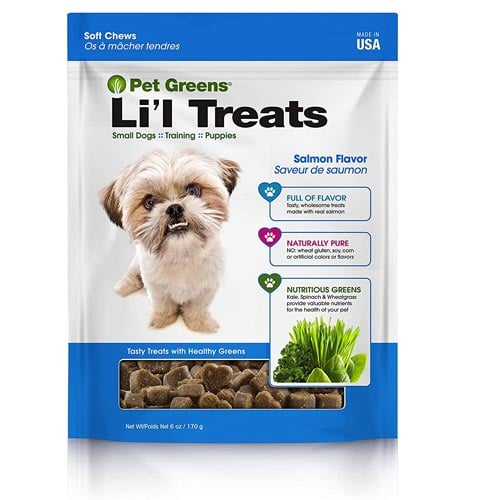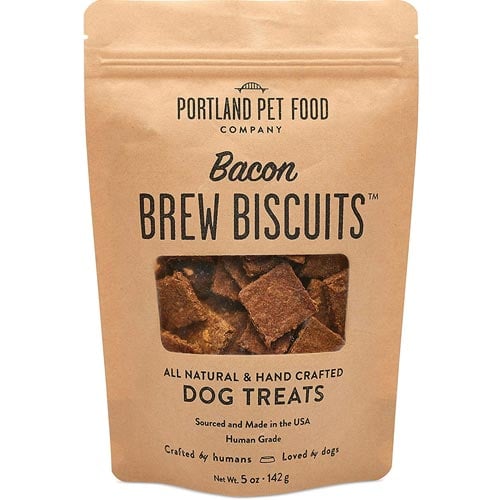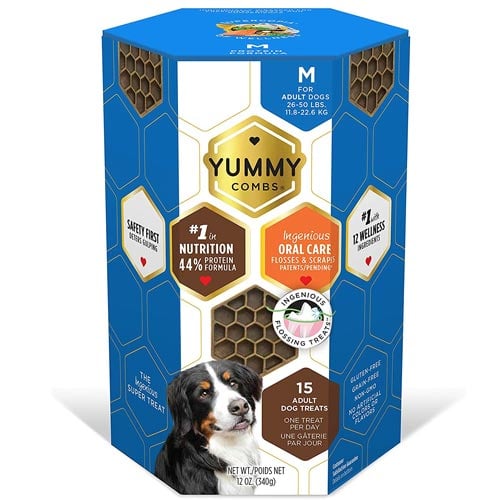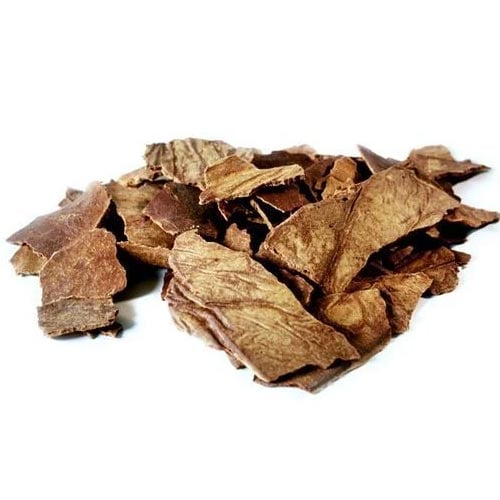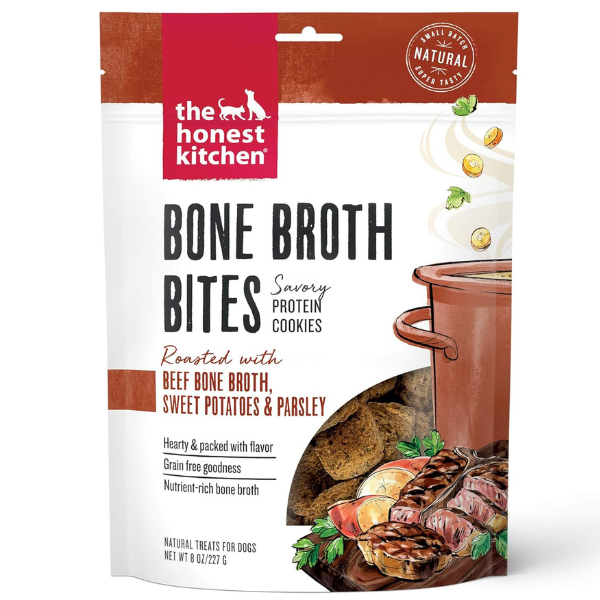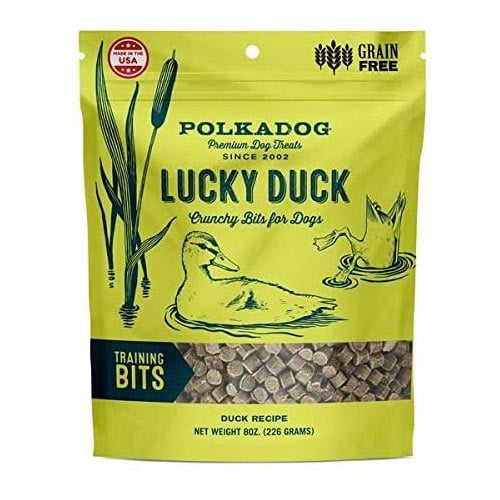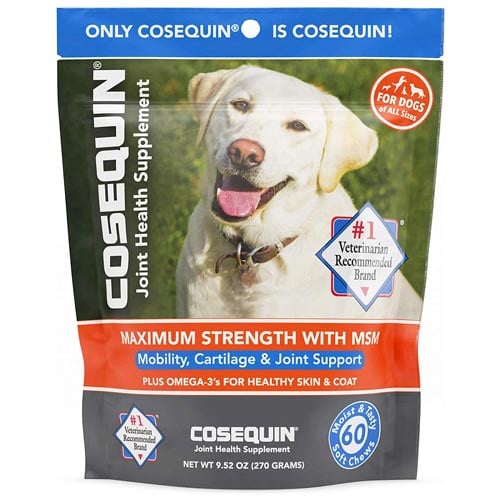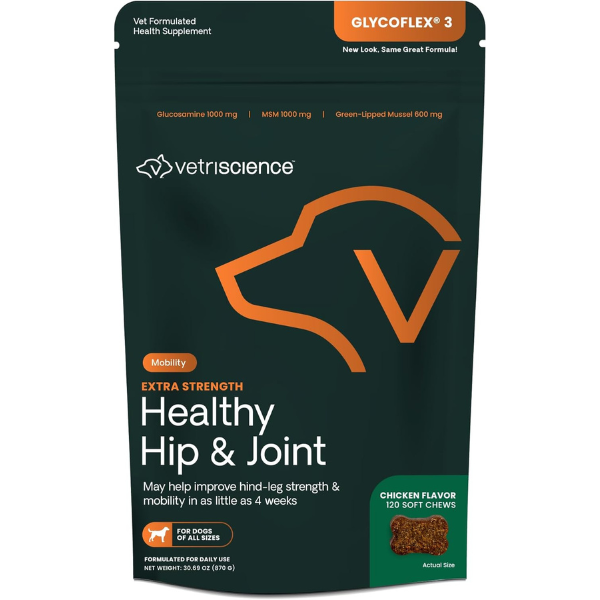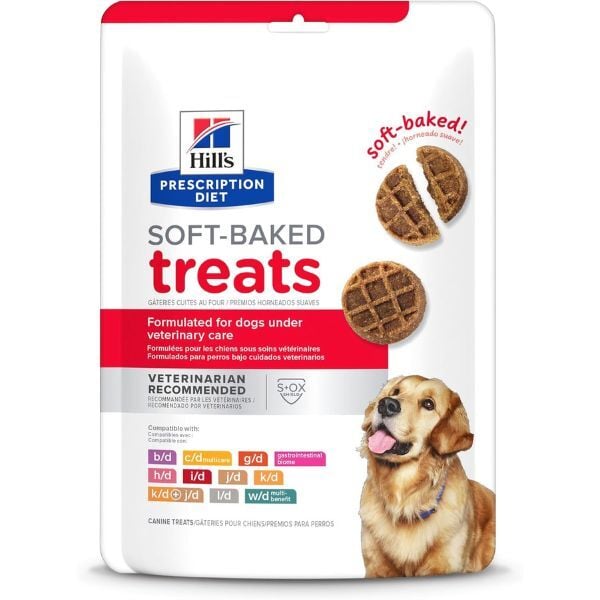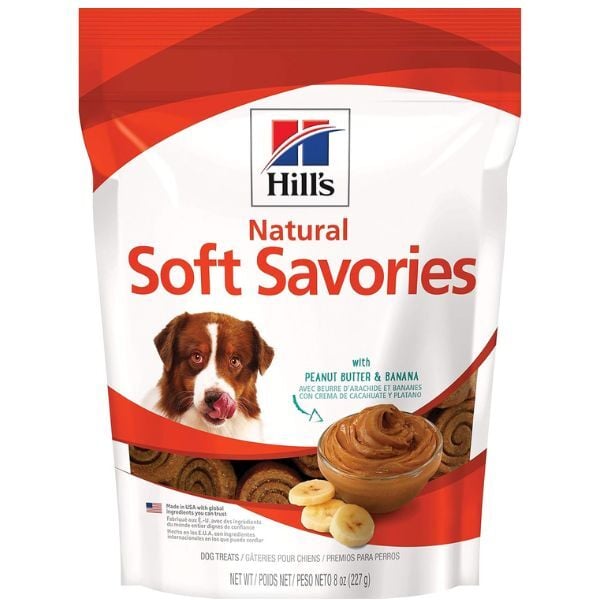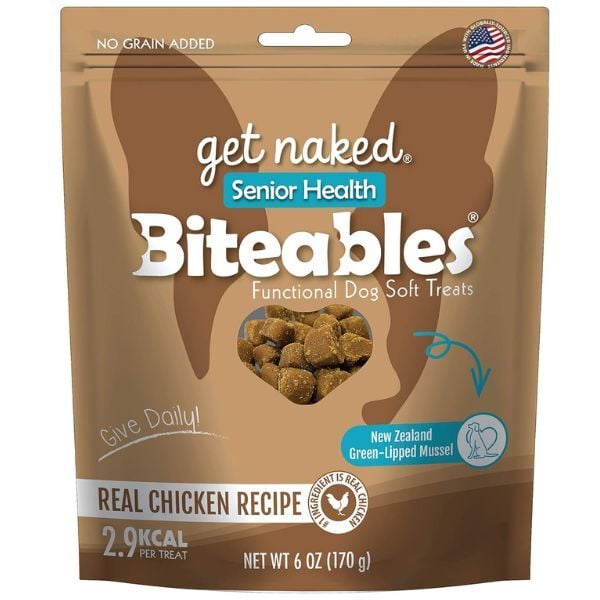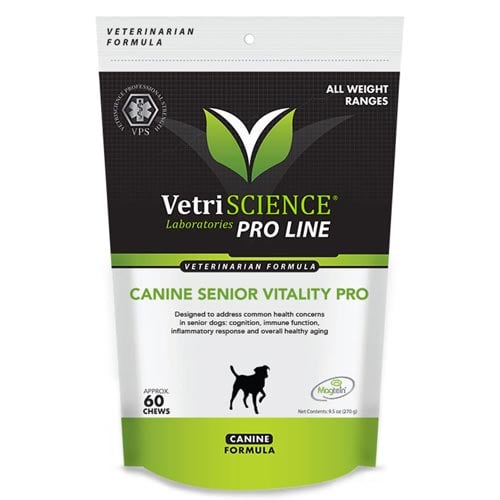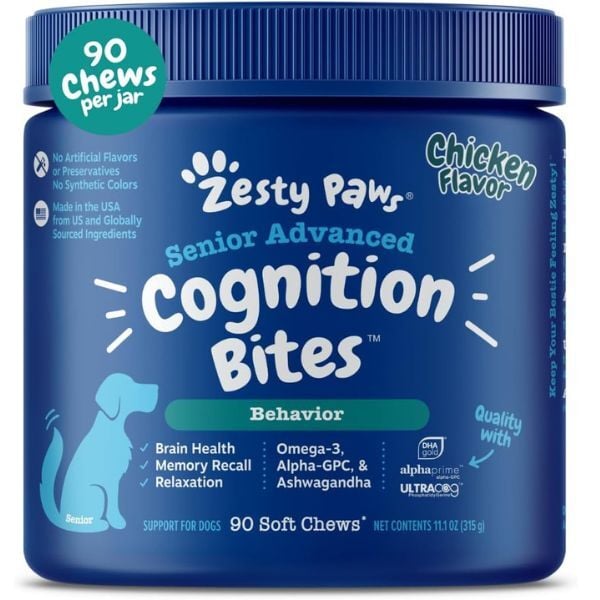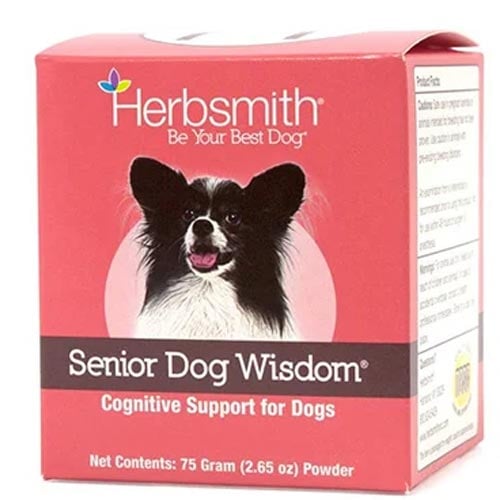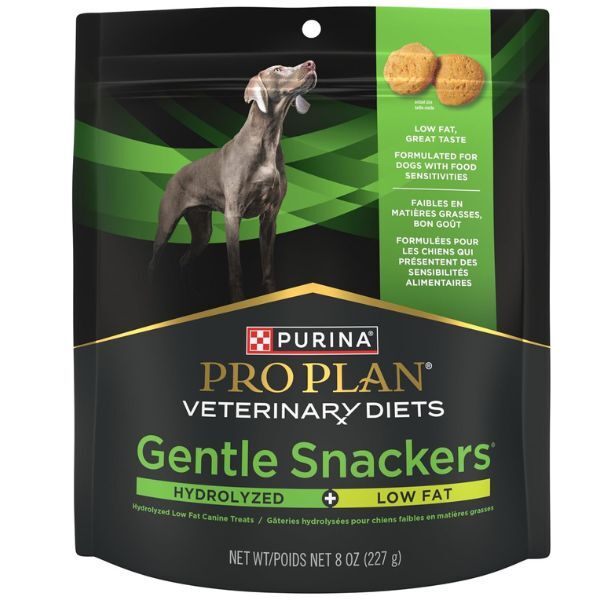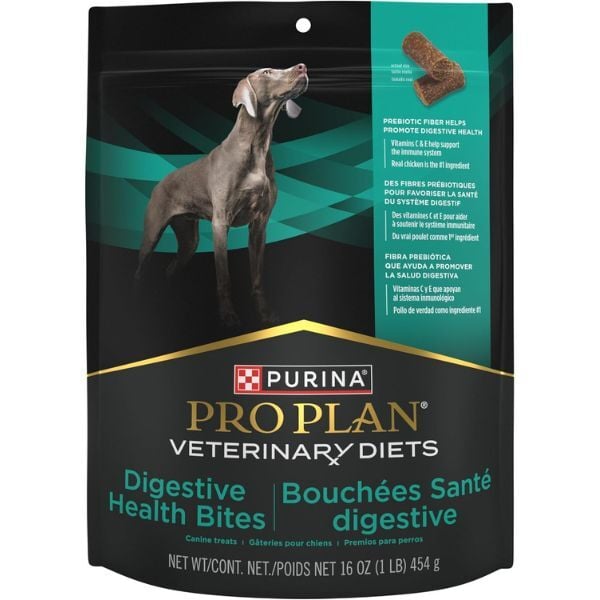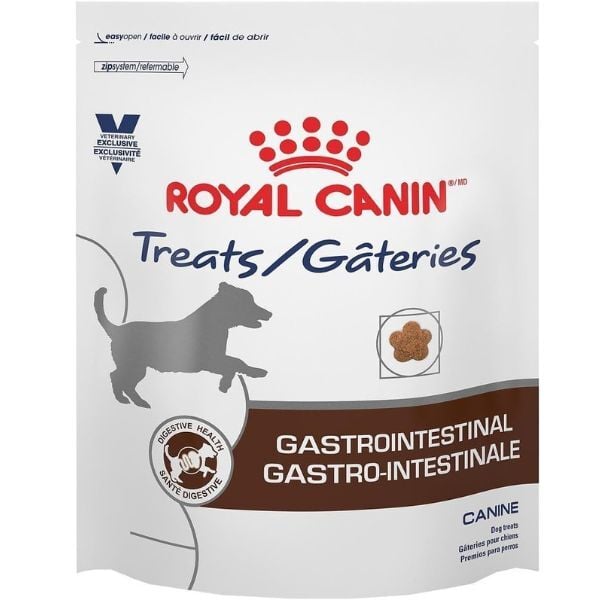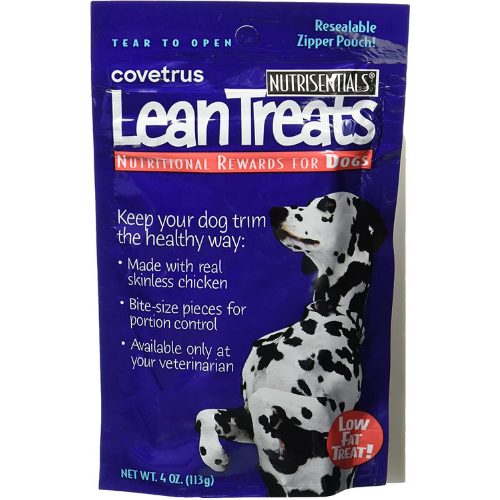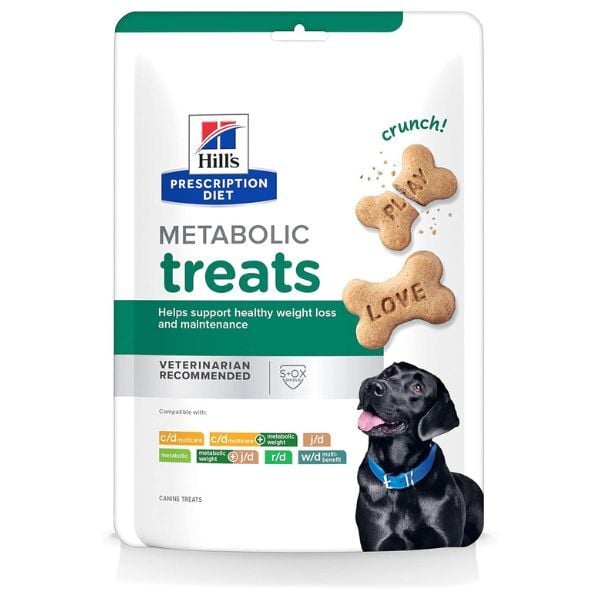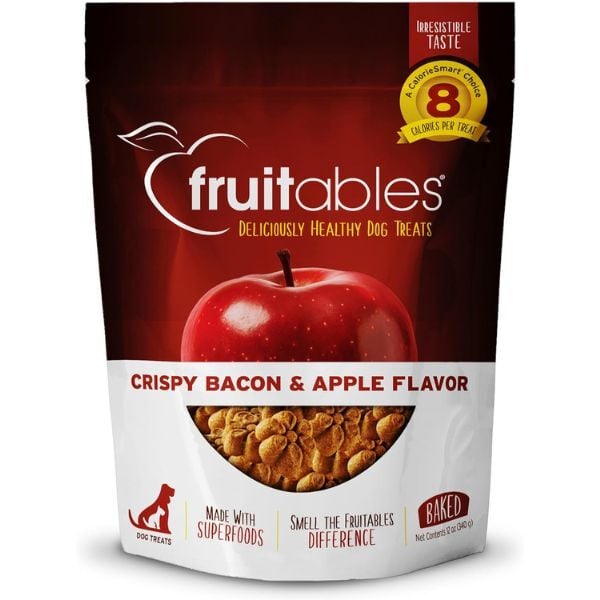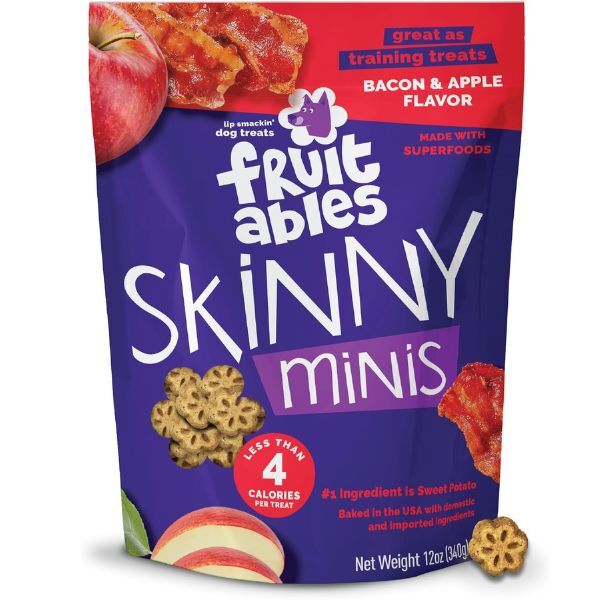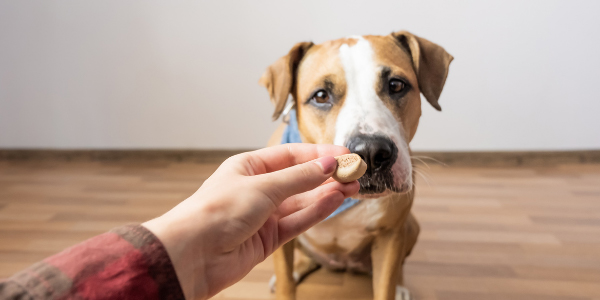
Veterinarians get asked this question all the time: “Which treat is best to give my dog?”
While you may just be asking this question to learn what the safest treat you can give your pet is, your veterinarian is thinking broader.
If chosen correctly, treats can supplement your pet’s health and be very beneficial to their overall well-being.
Not to mention the training that often accompanies treating, or the mental stimulation of an interactive game.
Because every pet is an individual with their own personality and preferences, some treats may be accepted readily. In contrast, some pets require a little trial and error before you find the treats they love.
With pet individuality in mind, let’s explore what sorts of treats are ideal for dogs – treats that are pretty good, treats to avoid, best treats for puppies, and best treats for senior dogs.
Top Tier Treats for Dogs
Vegetables and Fruits
If your dog enjoys vegetables and fruits, you’ll never have to spend a dime on pre-packaged treats! This is a great thing, as many contain not-so-desirable ingredients like preservatives and artificial coloring.
Additionally, veggies and fruits have no ‘hidden ingredients’, which makes them ideal for dogs with food allergies or intolerances.
Vegetables and fruits are low-calorie, have lots of vitamins and minerals, and they’re great for hiding medications. Their fiber level can also help your dog feel full between meals, and many senior dogs need more fiber in their diets.
From personal experience, individual dogs may enjoy carrots, broccoli, cauliflower, kale, spinach, butternut squash, summer squashes, winter squashes, celery, cucumbers, and green beans.
Note: With regards to squash, it is likely better to cook it instead of serving it raw. Cooking makes it easier to chew and digest, which is helpful for dogs with sensitive gastrointestinal tracts and senior dogs.
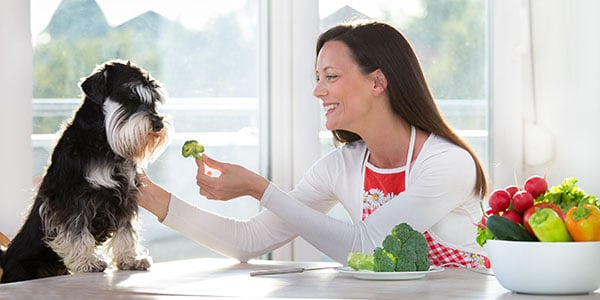 Individual dogs may also enjoy fruits, including berries, bananas, apples, pears, pineapples, and kiwis.
Individual dogs may also enjoy fruits, including berries, bananas, apples, pears, pineapples, and kiwis.
Note: Start off slowly when introducing vegetables and fruits, especially for dogs with sensitive stomachs. Some veggies, such as broccoli, can cause gas, so keep an eye on your dog for any signs of discomfort.
Fresh Produce Considerations & Warnings
When selecting pet treats from your produce department, be conscious that some fruits and vegetables can be toxic, like onions, currants, grapes, and raisins.
Be mindful of any fruits with pits, such as cherries, avocados, plums, and mangos, as the pits are not digestible and, if accidentally consumed, can cause an intestinal blockage.
Remove peels, shells, or skins of the fruits before serving them to your dog since they are difficult to digest and can cause stomach upset or even intestinal blockages.
High glycemic index foods, such as corn, potatoes, and watermelon, should be avoided or fed only in small amounts as treats. Use extreme caution when feeding fruits (such as watermelon, bananas, oranges, pineapple, and mangoes) with high sugar levels to diabetic dogs.
Coconut meat and citrus can potentially cause intestinal upset, and avocado meat can cause diarrhea or pancreatitis if fed in large amounts.
Onions, garlic, shallots, leeks, and chives can cause mild to severe anemia when fed to your dog. Grapes, raisins, and currants can cause kidney failure in some dogs.
With these cautions in mind, the produce section is your oyster.
How to Tell if Your Dog Will Like Fruits and Vegetables as Treats
Determine if your pet will accept fresh treats by providing a variety of options during your own meal preparation. The next time you prepare a vegetable or fruit at home, try giving your pet a taste.
Try offering a fresh, washed piece of fruit or vegetable and then again after it has been cooked (and cooled to edible temperature – without any seasoning).
Depending on your pet’s individual taste and texture preferences, they will either eat what you offer or will not. Continue this process with different fruits and vegetables until you determine your pet’s favorites.
Pro Tip: When cutting the ends off of beans, instead of composting them, toss them to your pooch. And if you want to add some mental stimulation, train this “stay out of the kitchen” behavior at the same time, as demonstrated in the video below.
Homemade Dog Treats
The best thing about cooking at home (for yourself or your pet) is that you know exactly what is going into those treats. You have control. If your pet needs something specific, you have the ability to bake homemade treats – we have recipes below to help get you started.
Check out this low-cal dog treat recipe I formulated. It’s great for any dog, but especially great for dogs needing to lose a few extra pounds:
Homemade Dog Treat Recipe: Fluffernutter Kisses
Good Treats
The treats selected for this category are treats derived from whole foods. Some of my favorites include:
Best High-Value Treats for Puppies and Training
All puppies deserve to be trained. Training helps puppies understand what is appropriate behavior in a given situation. Training also helps build your bond with your pup. Not all puppies are treat-motivated all of the time, but a high-value treat can help get and keep their attention around distractions, especially when a piece of their regular food isn't enough to keep their focus.
What does “high value” mean when referring to dog treats? What is of highest value to dogs? You probably guessed right; high value = meaty. The main ingredient in high-value treats is protein.
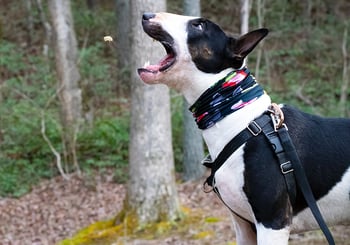 Now, if the high-value treats you are looking at are also high in fat, then keep shopping. Elevated fat levels can cause stomach upset, weight gain, obesity, and a bunch of associated health problems.
Now, if the high-value treats you are looking at are also high in fat, then keep shopping. Elevated fat levels can cause stomach upset, weight gain, obesity, and a bunch of associated health problems.
Let’s set your puppy up for success in their adult life and keep high-fat foods out of their body.
Note: The high-value meat treats you select should not be raw. See why I don't recommend raw treats in the Dog Treats to Avoid section at the end of this article.
These are some of my favorite high-value treats for dogs. They have good whole-food ingredients, vitamins, and minerals and can easily be broken up into little pieces for training purposes:
Best Treats for Senior Dogs
The treats you select for your senior dog need to be appropriate for their age and body health. As dogs age, they develop arthritis in their joints and back, and they can have organ disease or develop cognitive dysfunction (brain atrophy).
Talk to your veterinarian about your senior dog’s health and see if they have any nutrient levels or requirements to be aware of when selecting their food and treats. Since some senior pets will start to eat less than adult dogs, getting food and treats into their bodies that can help support their body’s overall health is recommended.
Joint Support
In general, pets who are aging will likely need joint support. Arthritis isn’t easy to spot at home. If your pet is getting up slower than normal, walking slower, exercising less often, walking stiffly, refusing to climb or descend stairs, limping, or not jumping normally, your veterinarian can perform a physical exam and x-rays to determine if arthritis has started affecting your pet.
There are a variety of treats that provide fish oil (Omega-3 fatty acids), type II denatured collagen, glucosamine, chondroitin sulfate, MSM, MCT, and curcumin. All of these supplements can help control joint inflammation and pain in different but complementary ways.
When given together, these supplements create a synergistic effect and can help improve pain and inflammation associated with arthritis.
Here are some of my favorite treats that help with joint care. These treats each have a combination of joint supplements to help keep your pet comfortable:
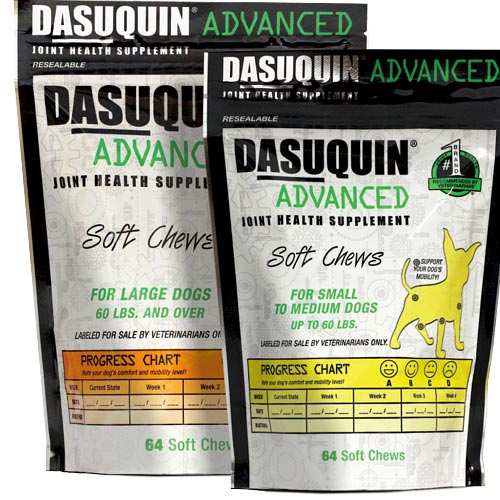
Available from your Veterinarian
Note: While we are calling them a ‘treat’, give as directed by your veterinarian or according to the package labeling.
Arthritis can occur in just about any joint in your senior dog’s body, including their jaws. Here are some easy chew treat options:
Note: The Get Naked Biteables contain Chondroitin Sulfate and New Zealand green-lipped mussel. Therefore, give as directed on the label.
Brain Aging
Another treat consideration for senior dogs is choosing treats that can support their aging brain to keep them aware of their surroundings, minimize confusion, support the ability to problem solve, and otherwise enjoy life.
The following treats are packed full of antioxidants and supplements to keep your pet interacting with their environment:
Sensitive Systems
Some dogs, especially seniors, are prone to digestive issues and gastrointestinal upset since they have a decreased ability to digest and absorb food.
Here are some treat options for dogs with sensitive systems or those recovering from gastrointestinal upset:
Weight Management
As of 2022, in the United States, 59% of dogs were deemed overweight or obese according to the Association for Pet Obesity Prevention. Per ScienceDirect, 46.4% of seniors are overweight. Too many treats, especially high-calorie ones, can contribute to your dog being overweight.
If your dog needs to lose weight, or you want to avoid weight gain from treats, consider one of these options:
Dog Treats to Avoid
Bones and Hard Chews
Dogs like chewing on bones. The problem is – bones don’t get along with dog teeth – often causing tooth fractures, pain, and infection. There is an argument that giving bones or other chews with a similar hardness to bones helps with dental health.
Bones do help keep the above-the-gum tooth surfaces free of plaque and calculus, but so does brushing your dog’s teeth daily, which is A LOT safer. They also do nothing for the health of the tooth under the surface of the gums, where painful bacterial infections develop.
Here are three simple steps to choosing the best chews for your dog.
In summary, do not give bones or hard chews as treats to dogs, as it’s just not worth the risk of a tooth fracture, the subsequent expense of the dental care that is needed to care for the fractured tooth, or the dangers of bone splinters, which can perforate your dog’s gastrointestinal tract.
All treats given to your dog need to indent when they are chewed on. A rawhide alternative that is also easier on your dog’s belly (digestible) is Earth Animal No-Hides.
Caution: Always monitor your dog while they are enjoying a treat as they can easily turn into choking hazards.
Here is Preventive Vet's senior pug, Mabel Petrillo, enjoying a salmon Earth Animal No-Hide chew:
Buy Earth Animal No-Hides on Amazon
Raw Food and Treats
The high-value meat treats you select should not be raw. If the pet food store tells you differently, I would highly recommend reading our article that discusses the health risks to you and your pet before trying anything raw.
Raw foods come with their own set of possible dangers, especially if your pet is young and does not yet have a fully developed immune system, or in older animals with weakened organs and immune systems.
We don’t know what kind of sickness-causing bacteria are lurking on these raw products. Some of the potential bacterial contaminants include E. coli, Salmonella, and Listeria, among many others. Cooking the meat reduces/eliminates this risk.
If you have ever had food poisoning, you will understand this concern. In general, cooked treats are safer for you, your family, and your pet.
Freeze-dried raw treats like this one, Vital Essentials Freeze-Dried Minnows, are popular, though. It is a favorite of many of the Preventive Vet dogs. They are whole ingredients (like some of the rest of their product line that includes heart and liver treats and turkey giblets), so they have high nutritional value.
If the treat is grown, harvested, and packaged in the US, which is super important from a product safety standpoint, then honestly, I would rather feed a treat with these whole food ingredients then some of the amorphous blob treats available online and in pet stores.
Here's Daisy, Preventive Vet senior pup, going nuts for her freeze-dried minnows:
Jerky Dog Treats
Beef jerky, or any jerky, generally has seasonings, added preservatives, or coloring. These seasonings and added ingredients are not recommended for your pet’s optimal health. I have had many patients that developed unpleasant gastrointestinal issues (vomiting, diarrhea, and blockages) from consuming jerky treats.
Not Made in the U.S.A
I prefer treats made in the United States because of the country’s quality control standards and labeling standards. Treat ingredients that have been processed and packaged in other countries do not necessarily have the same standards for ensuring bacterial contamination is minimized, there are no heavy metals contaminating the treats, and ingredients like melamine don’t end up in our dog treats and causing illness in our pets.
High-Fat Content
Be mindful of the fat content of any food or treat you are giving to your pet. Your pet does not want to experience intestinal upset any more than you want to clean up their diarrhea or vomit.
Additionally, being mindful of the fat content is critical if your dog has ever had pancreatitis, if they are a breed predisposed to pancreatitis, or if they are a breed (Miniature Schnauzers, Shetland Sheepdogs, Beagles, Collies) predisposed to hyperlipidemia (high levels of fat in the blood).
Unfortunately, the pet food label itself doesn’t provide much information about the fat level. Here’s how to determine the fat level in a food or treat:
How to Calculate Fat Content in Dog Treats (grams of fat per 1000 kilocalories)
"The terms kilocalories (kcal) in pet foods and Calories in human foods are interchangeable! For example, a large apple is 120 human calories, which, if fed to a dog, is counted as 120 kilocalories.”
Source: K9 Weight Challenge
All pet foods and treats have a "guaranteed analysis" on the packaging. Unfortunately, this concept is useless, and whoever came up with it has done a disservice to all of us.
Thankfully, a veterinary nutritionist has figured out how to convert a guaranteed analysis into a more universal nutrition measurement language — grams per 1000 kcal.
On the treat label, find the fat % and the energy of kcal per kg of food (kcal/kg)
- Add 1% to the fat % on the label.
- Take the kcal/kg of the food or treat and divide by 10,000
- Divide the answer to step 1 by the answer to step 2. This should give you the number of grams of fat/1000kcal.
- Note: Use the number from step 1, not the percentage. For example, if the fat % was 7%, use 7 not 0.07)
- Compare your result against the chart below.
|
Dog Treat Fat Content |
Grams of fat per 1000kcal |
|
Low fat |
Fewer than 30 |
|
Moderate fat |
30–50 |
|
High fat |
Greater than 50 |
If you do your calculation as described above and you find that your pet’s treats are high in fat, it’s time to switch treats.
(Note: this calculation only works for fat as is. If you want to calculate a high, moderate, or low protein level, then you have to add 1.5% to step 1 instead of 1%.)
Here’s an example of the fat content calculation using the Zuke’s puppy treats I recommended above:
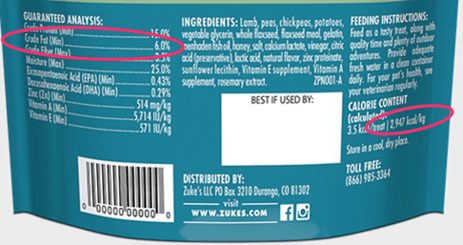
- Step 1: 6% + 1% = 7
- Step 2: 2,947 kcals ÷ 10,000 = .2947
- Step 3: 7 ÷ .2947 = 23.7
- Result: Low fat!
Poor-quality dog treat ingredients: Treats that contain artificial coloring, artificial preservatives, or ingredients that you yourself would not eat (or don’t recognize) are not recommended for your pet. If those ingredients don’t serve a nutritional value, then what are they doing once they get inside your pet?

Happy treating!
If your pet loves a certain brand of treats, share it with us in the comments below!


